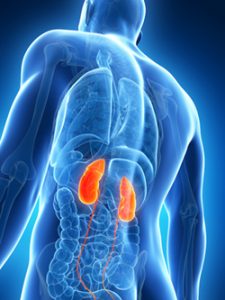Is there any data behind renal hydration prior to CT to prevent contrast induced nephropathy? Or is it just a habit we picked up along the way and has no clinical benefit? The AMACING trial answers that question.
Prophylactic Hydration to Protect Renal Function from Intravascular Iodinated Contrast material in Patients at High Risk of Contrast-Induced Nephropathy (AMACING): A Prospective, Randomised, Phase 3, Controlled, Open-Label, Non-Inferiority Trial.
Background: Currently, there is no treatment for Contrast Induced Nephropathy (CIN). In patients who have a reduced GFR or whom are high risk for CIN, the goal is prevention. The staple of prevention has been pre and post exposure IV hydration.
Question: In high risk patients, will pre and post hydration with intravenous crystalliods prevent contrast induced nephropathy?
Design, setting, population: Prospective, randomized, non-inferiority trial. (Open label: Lab workers processing creatinine samples were blinded however clinicians and study subjects were not). Patients were randomized to either receive the intervention or control, baseline characteristics were balanced between groups. This study took place in the Netherlands. 1300 patients were initially included however 600 patients were enrolled. Patients were enrolled in the study if they were scheduled for an elective procedure requiring IV contrast and had the following:
- GFR between 45 – 59mL per min/1.73m2 + Diabetes, OR 2 or more risk factors (age >75y, anemia, CAD, NSAID use, or use of predefined diuretic nephrotoxic medication
- GFR between 30 – 45 mL per min/1.73m2
Intervention: Pt either received normal saline at a rate of 4cc/kg/hr for 4 hours prior to and 4 hours after contrast administration OR patients received normal saline at a rate of 1cc/kg/hr for 12 hours prior to and 12 hours after contrast.
Control: No hydration
Outcomes:
Primary outcome: Rate of contrast induced nephropathy. (Authors defined CIN as increase in baseline creatinine of more than 25% within 2 – 6 days after contrast exposure). Patients in the hydration arm had a rate of CIN of 2.7% vs in the no hydration arm with a rate of CIN of 2.6% (p= 0.471).
Secondary outcomes:
- Incidence of renal failure defined as a GFR >15%: 0% in hydration arm vs 0% in no hydration arm (p = 1.000)
- All cause mortality: 0% in hydration arm vs 0.9% in no hydration arm (p = 0.126)
- Incidence of symptomatic heart failure: 4% in hydration arm vs 0% in no hydration arm (p = 1.000)
The Take away: There is no clinical benefit to pre and post IV hydration in preventing CIN in high risk patients.
References:
Nijssen EC et al. Prophylactic Hydration to Protect Renal Function from Intravascular Iodinated Contrast material in Patients at High Risk of Contrast-Induced Nephropathy (AMACING): A Prospective, Randomised, Phase 3, Controlled, Open-Label, Non-Inferiority Trial. Lancet 2017; S0140 – 6736(17)30057 – 0.

